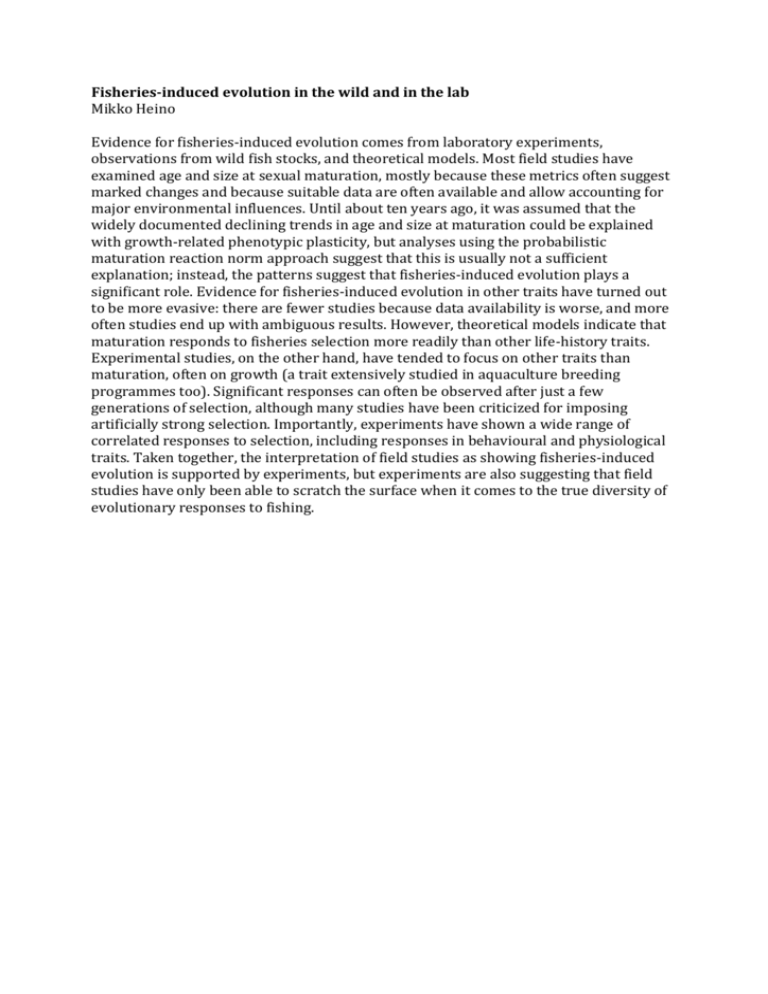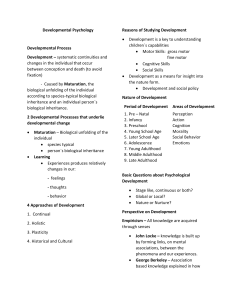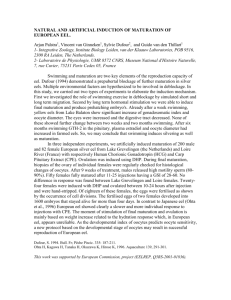Fisheries-induced evolution in the wild and in the lab Mikko Heino
advertisement

Fisheries-induced evolution in the wild and in the lab Mikko Heino Evidence for fisheries-induced evolution comes from laboratory experiments, observations from wild fish stocks, and theoretical models. Most field studies have examined age and size at sexual maturation, mostly because these metrics often suggest marked changes and because suitable data are often available and allow accounting for major environmental influences. Until about ten years ago, it was assumed that the widely documented declining trends in age and size at maturation could be explained with growth-related phenotypic plasticity, but analyses using the probabilistic maturation reaction norm approach suggest that this is usually not a sufficient explanation; instead, the patterns suggest that fisheries-induced evolution plays a significant role. Evidence for fisheries-induced evolution in other traits have turned out to be more evasive: there are fewer studies because data availability is worse, and more often studies end up with ambiguous results. However, theoretical models indicate that maturation responds to fisheries selection more readily than other life-history traits. Experimental studies, on the other hand, have tended to focus on other traits than maturation, often on growth (a trait extensively studied in aquaculture breeding programmes too). Significant responses can often be observed after just a few generations of selection, although many studies have been criticized for imposing artificially strong selection. Importantly, experiments have shown a wide range of correlated responses to selection, including responses in behavioural and physiological traits. Taken together, the interpretation of field studies as showing fisheries-induced evolution is supported by experiments, but experiments are also suggesting that field studies have only been able to scratch the surface when it comes to the true diversity of evolutionary responses to fishing.











